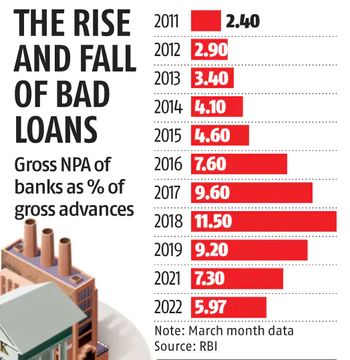NPA’s 💵📉
I have recently read news about PNB selling NPA of Apollo Distilleries & breweries. I wanted to delve a little deeper into how it all happens.
So, Firstly Banks lend money to other institutions or individuals and in return, they expected an interest/coupon and the original lent amount over a period of time. In the bank’s books of account, the lent amount becomes an asset as it generates income for the bank. Now over time if the asset ceases to generate income for the bank then it becomes an NPA (Non-performing asset).
According to RBI, an asset can be categorized as an NPA if the interest and/or the instalment of principal remain overdue over a period of more than 90 days in respect of a term loan.
Categories of NPA:
Substandard Assets: An asset that has remained NPA for a period less than or equal to 12 months. (<12 months non-performing). Provision required by the bank: 15% of asset value.
Doubtful Assets: Asset that has been in the substandard category for a period of 12 months. (>12 months non-performing). Provision required by the bank: 25% of the asset value if it is doubtful asset up to 1 year, 40% of asset value if doubtful 1 to 3 years, 100% of doubtful for more than 3 years.
Loss assets: An asset that has been identified by the bank/RBI but the amount hasn’t been written off wholly from the books of account yet.
Depending on the category of the NPA, banks have to take provisions for NPA, and as provisions fall under expenses on the income statement, the chances of profit erosion/loss increase.
Why NPA’s occur:
• Wilful defaults
• Prevailing economic conditions
• Lenient lending norms.
Sale of NPA’s:
Now, if the bank can no longer collect the disbursed loans, they can sell them (NPA portfolio sale) on the market. Asset reconstruction companies buy these loans at a discount and they proceed to attempt recovery of the loans.
Ex: In 2020, Yes Bank sold its entire NPA portfolio worth 32,344 crores for around ~8000 crores. Loss incurred by the bank is covered from operating profit which is ultimately a loss borne by the shareholders.
